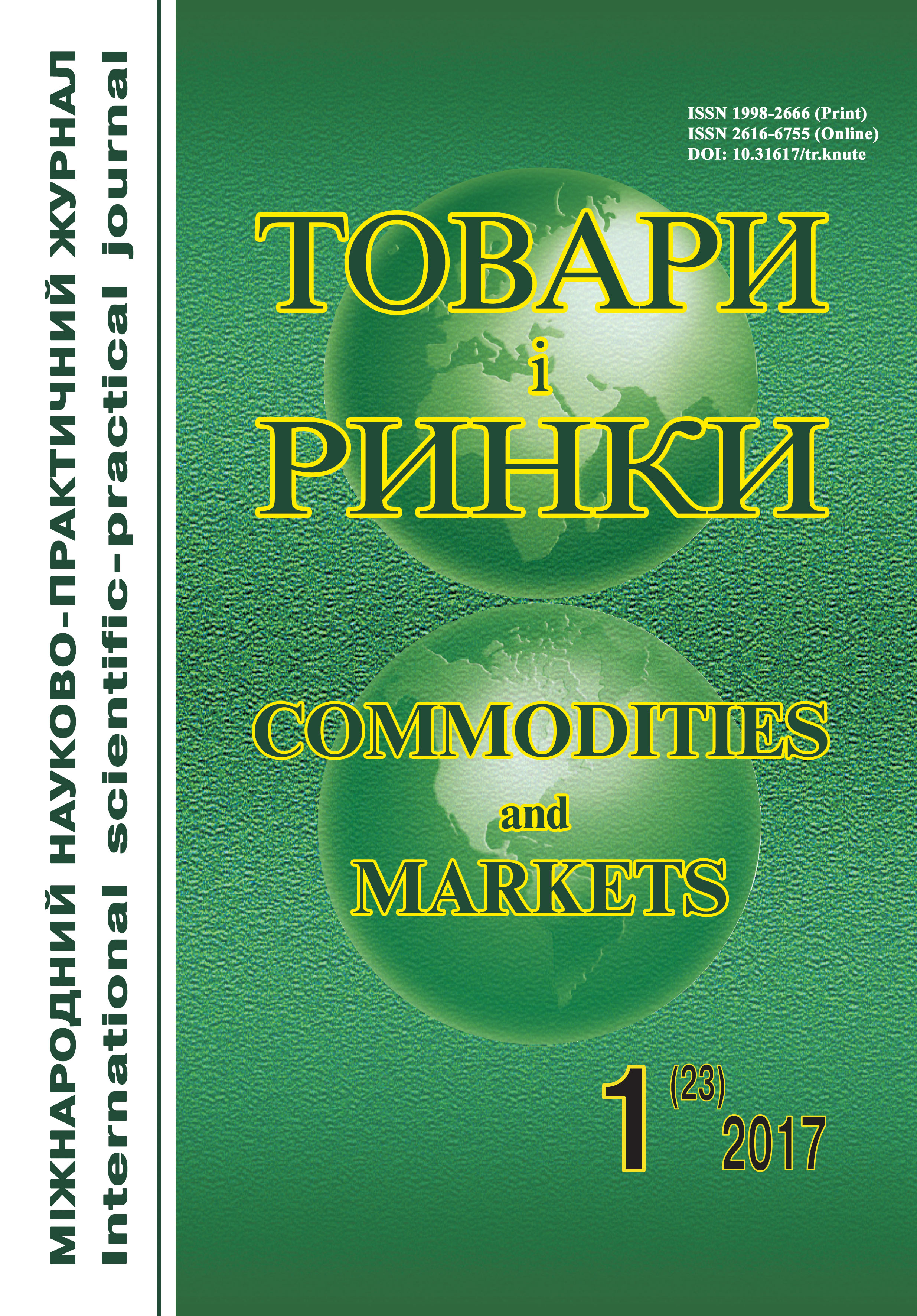Pigment complex of frozen broccoli
Keywords:
broccoli, vegetable pigments, a- and b-chlorophyll, β-carotene, pretreatment, freezingAbstract
Background. The stable demand for fresh fruits and vegetables and products of their processing is due to not only their high biological, nutritional value, but also to an extremely wide palette of colors and shades, which for consumers are one of the defining criteria of their choice. Pigment complex of fruit and vegetables is represented by carotenoids, chlorophyll, flavonoids, anthocyanins, which are responsible for a color variety of fresh fruits and vegetables. Medicinal properties of chloroplatinic vegetables with the content of a- and b-chlorophyll, which is structurally similar to hemoglobin and have antitumor properties, increase immunity, normalization of metabolism and is due to the combined action of chlorophylls, ascorbic acid and β-carotene, which are in a considerable amount in green vegetables.
Chlorophyll of fruits and vegetables is not resistant to the effects of various factors: under the influence of heat treatment, pH, oxygen, light it experiences significant loss of chlorophyll, accompanied by darkening or discoloring of the product. So, the problem of preservation of color of chloroplatinic products of processed fruit and vegetables is important because different species and varieties of fruits and vegetables vary greatly in chemical composition.
The aim of this study is research of the pigment complex of cabbage and broccoli, which grow in Ukraine and its changes during processing and freezing.
Material and methods. The object of research is fresh, soaked in a solution of salt, blanched and frozen broccoli variety Partenon, Monaco F1, Belstar F1, Quinta F1. Samples of cabbage are soaked in the salt solution concentration of 3 % for 20 min, blanching occurred at the temperature of 85 оC for 3 min. The study was conducted according to the following criteria: content of a- and b-chlorophyll and β-carotene.
Results. Conducted research of fresh broccoli confirmed that the varieties have no significant difference in the content of chlorophyll, the amount of which depending on the varieties ranged from 49.0 to 53.7 mg/100 g. During the blanching of the cabbage a-chlorophyll reduced on average by 10 % and b-chlorophyll on the average by 16 %. Soaking in salt solution induces an increase of the concentration of a-chlorophyll on average by 12 % and b-chlorophyll on average by 18 % due to a compensatory reaction, because in the given conditions the efficiency of solar energy decreases. During freezing of broccoli a-chlorophyll decreased by 12–18 %, b-chlorophyll by 4–19 % depending on the species and its content in fresh cabbage. The results of studies of β-carotene confirm its negligible content in cabbage from 3.1 to 4.6 mg/100 g.
Conclusion. It has been established that the pigment complex of the studied broccoli variety is characterized by a rather high content of a- and b-chlorophyll and low content of β-carotene.
It has been identified that soaking broccoli in a solution of salt increases concentrations of a- and b-chlorophyll by 7–11 % depending on the variety, which confirms the additional benefits of this method of pretratment before freezing. It provides frozen broccoli, pigment complex of which will undergo minimal modifications.
References
Bezusov A. T., Kuznecova K. D. Doslidzhennja stabilizacii' pigmentnogo kompleksu lystovyh ovochiv. Harchova nauka i tehnologija. 2013. № 4. S. 27—30.
Korobec' N. V. Formuvannja jakosti dobavok iz hlorofilvmisnyh ovochiv ta produktiv harchuvannja z i'h vykorystannjam : dys. kand. tehn. nauk : 05.18.15. Harkiv, 2006. 335 s.
Yamauchi Naoki, Watada Alley E. Shlorophyll and xanthophyll changes in broccoli florets stored under elevated CO2 or ethylene-containing atmosphere. Postharvest biology and technology journal. University of California. 1998. N 33. R. 114—117.
Pavljuk R. Ju. Rozrobka tehnologii' konservovanyh vitaminnyh fitodo-bavok i i'h vykorystannja v produktah harchuvannja profilaktychnoi' dii' : avtoref. dys. … dokt. tehn. nauk : spec. 05.18.13 "Tehnologija konservovanyh i oholodzhenyh harchovyh produktiv". Harkiv, 1996. 48 s.
Pogars'ka V. V. Formuvannja jakosti karotynoi'dnyh fitodobavok pro-filaktychnoi' dii' z morkvy ta i'h vykorystannja v produktah harchuvannja : avtoref. dys. … kand. tehn. nauk : spec. 05.18.15 "Tovaroznavstvo harchovyh produktiv". Harkiv, 1998. 17 s.
Pilipenko L. M. Nauchnye osnovy tehnologii konservirovannyh pishhevyh produktov iz listovyh ovoshhej : dis. dokt. tehn. nauk : 05.18.13. Odesa, 1994. 522 s.
Derzhavnyj rejestr sortiv roslyn, prydatnyh dlja poshyrennja v Ukrai'ni. Derzhavna veterynarna ta fitosanitarna sluzhba Ukrai'ny. 2015. URL : http://vet.gov.ua/node/919 (data zvernennja: 22.03.2017).
Tartachnyk I. I. Metody doslidzhennja zelenyh pigmentiv v lystkah i plodah. Problemy monitoryngu u sadivnyctvi ; za red. A. M. Sylajevoi'. Kyi'v : Agrarna nauka, 2003. S. 157—159.
Belins'ka S. O., Levyc'ka S. O. Biologichna cinnist' bilka kapusty brokoli. Mizhnar. nauk.-prakt. zhurn. "Tovary i rynky". 2016. №2(22). S. 92-98.
Lebedjeva T. S., Sytnyk K. M. Pigmenty roslynnogo svitu. Kyi'v : Nauk. dumka, 1986. 83 s.



